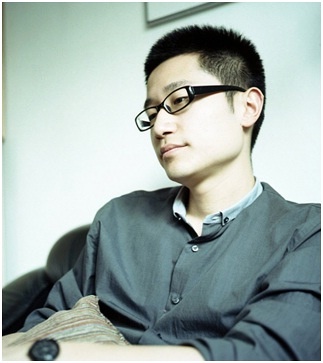|
Introduction of the artist:

HU Yun (China)
Born in 1986, Shanghai, China. Lives and works in Shanghai.
Selected solo
exhibitions: 2011 Natural History Museum, London; 2010 Magician Space, Beijing;
Selected group exhibitions: 2012 7th Shenzhen Sculpture Biennale. Co-founder
of the independent art e-journal PDF and Youth Sale Store, an artists initiated
pop up project.
In Hu Yun’s work Everything is the Same as It Looks Like (2008), the central
pillar, identical to all the others in the space, at first glance appears
motionless, but is actually moving back and forth, silently and extremely
slowly–nearly undetected by our eyes but occuring before hem just the same.
Every single millimetre of the pillar’s movement unfolds its mystery over a
prolonged period, under attentive watching, imbued with an almost lyrical
grace.
Hu’s new series, Secret Garden I: Reeves’ Pheasant is an artistic
response to his research in the field of natural history, derived from a
substantive study on a particular bird endemic to China, which was first
recorded in Li Shizhen’s Ming Dynasty Compendium of Materia Medica, and known in
the East as ‘syrmaticus reevesii’.
In the early nineteenth century, like
other live oriental specimens, it was first introduced to Europe by John Reeves
(1774-1856), who was a tea inspector for the East India Company and an amateur
naturalist. During his stay in Canton for tea trading, Reeves commissioned
Chinese artisans to draw illustrations of animals and plants, and collected
plants and seeds that were new to European science. From different perspectives,
Hu re-examines and re-combines natural scientific information, historical
stories and personal experiences.
When those inquisitive Englishmen were
hunting for rarities in and around the city of Shanghai, they would often find
them to be “too fast”. They “couldn’t be seen clearly…” This fleeting visibility
further stimulated the curiosity of the West, simultaneously weaving a tale and
creating a piece of history. As the artist reflects, “history is always hidden
and unseen, and yet to be observed, found and conjectured through a variety of
our memories, experiences and understandings.”
Introduction of works:

Shua Ling zi(Play with the feather), video installation, 209x100x230cm,
monitor, curtain and carpet, 2012(Stage photo)

Beale’s Aviary(Sketch), Model Installation, 105x66x30cm, Metal, Plexiglass,
2012

The Chest of Curiosities (Sketch), Installation,100x80x80cm,wood, wire
netting, paint, 2012
At first glance, the central pillar, which is identical to all the others in
the space, in Hu Yun’s work Everything is the Same as It Looks Like (2008),
appears motionless, but it is actually moving extremely slowly to reveal itself,
almost invisibly, in front of viewers. Every single millimetre of the pillar’s
movement unfolds its mystery in the prolonged time of attentive regard and, in a
way, is imbued with an almost lyrical grace.
His new series, Secret Garden I: Reeves’s Pheasant is an artistic response to
his research in natural history. It was derived from a substantial study on a
particular bird endemic to China, which was recorded in Li Shizhen’s Compendium
of Materia Medica in the Ming dynasty, and known in the West as ‘syrmaticus
reevesii’. In the early nineteenth century, like other oriental live specimens,
it was first introduced to Europe by John Reeves (1774-1856), who was a tea
inspector for the East India Company and an amateur naturalist. During his stay
in Canton for tea trading, Reeves commissioned Chinese artisans to draw
illustrations of animals and plants, and collected plants and seeds that were
new to European science. From different perspectives, Hu re-examines and
re-combines natural scientific information, historical stories and personal
experiences.
When those inquisitive English people were hunting for rarities in and around
the city of Shanghai, they usually found them “too fast, couldn’t be seen
clearly…” This fleeting visibility further stimulated the curiosity of the West,
simultaneously creating a tale and unfolding a piece of history. As the artist
reflects, “history is always hidden and unseen, and yet to be observed, found
and conjectured through a variety of our memories, experiences and
understandings.” | 
